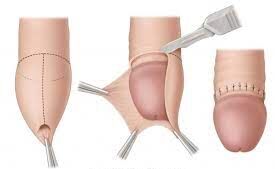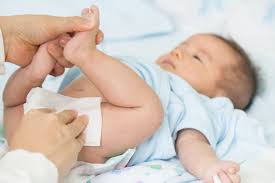Circumcision Information: Benefits, Procedure, and Care Tips
Circumcision is a surgical procedure that involves the removal of the foreskin from the penis. It is a common practice in some cultures, with historical records stretching back thousands of years. In modern times, circumcision is typically performed for cultural, religious, and medical reasons. It is a relatively quick and straightforward procedure that can offer both short and long-term benefits. Please keep reading for details on the following topics:
Contraindications of a circumcision
How circumcision is done
After circumcision care
What to expect after a circumcision
Risks of a circumcision
When to seek urgent medical care
How to clean an uncircumcised penis

RISKS OF CIRCUMCISION
Blockage of the urethra
Heavy bleeding requiring stitches
Bleeding from the incision
Infection of the area caused by contact with urine or stool
Surgical mistake
Accidental removal of the skin surrounding the penis
Accidental removal of insufficient amount of foreskin
Accidental removal of too much foreskin
Scarred tissue formation
Accidental amputation of the tip of the penis
Accidental remains of pieces of foreskin which can cause erectile problems
CONTRAINDICATIONS OF A CIRCUMCISION
The baby is having difficulty urinating and defecating
The penis is abnormal for example the urethra (place where the urine passes) is located the wrong place (hypospadias or epispadias)
There is a mass on the spinal cord
Hemorrhaging problems in the family (bleeding disorders)
HOW A CIRCUMCISION IS DONE
The baby will be supported on a flat surface with the limbs strapped to keep him from moving
The penis will be cleaned with an iodine solution
The area will be numbed with a local anesthetic
General anesthesia may be given to babies one month or older
A sterile circumcision clamp or device will be placed over the head of the penis
The foreskin will then be removed using a sterile scalpel or scissors
CIRCUMCISION-AFTER CARE

The penis must be carefully washed with warm water and patted dry
Soap must be avoided on the penis to prevent skin irritation
Petroleum jelly, such as Vaseline, will be applied to the on the area to prevent the lesion from getting stuck to
The diaper will be placed loose enough to minimize pressure to the penis
Make sure diapers are fastened loosely so there is less pressure on the penis while it heals
Care should be taken to avoid removing the layer which forms over the penis to avoid delay in the healing process
HOW TO CLEAN AN UNCIRCUMCISED PENIS
Avoid applying too much pressure when moving the foreskin over the penis because it can hurt the tissue
Use warm water to clean the penis
Clean the foreskin daily, once it is able to draw back by:
With gently care, slide the foreskin towards the body as far as it can go
Use warm water to clean the area
Slide the skin back to its place over the penis
WHAT TO EXPECT AFTER THE CIRCUMCISION
The groin, penis, and scrotum may appear reddish brown because of the liquid (Iodine) used to cleanse the skin before surgery
The shaft of the penis where the skin was removed will look raw and slightly swollen for a few days after the circumcision
The baby will stay in the hospital or clinic for 2 to 4 hours after the procedure for observation
The penis will be examined during routine visits
The penis will be checked for bleeding, and the circumcision area covered with petroleum jelly and gauze
If bleeding occurs, direct but gentle pressure can be applied to the area with a clean cloth or bandage for about 5 to 10 minutes
The baby will feel some pain and have trouble sleeping
The gauze used will probably come off when the baby urinates
Warm water can be used to soak and loosen the gauze from the penis
Healing begins when a thin yellow layer which disappears within days grows over the circumcision site
WHEN TO SEEK MEDICAL CARE
It is important to know when to seek urgent medical care, as delaying appropriate treatment can lead to further health complications. If your baby experiences any of the following symptoms, you should seek medical help immediately. If you have any doubts about whether you should seek medical care, it is always better to err on the side of caution and consult with your doctor.
The baby is febrile (has a fever)
Baby has developed signs of an infection of the penis or wound such as inflammation, tenderness or abnormal discharge
There is heavy bleeding from the area
The baby is irritable, with a high-pitched cry
The baby is not eating and urinating
The ring of the Plastibell device did not fall off after 10 to 12 days
Disclaimer: The information provided in this content is for general informational purposes only. It is not intended as medical or healthcare advice, diagnosis, or treatment. Always seek the advice of a qualified healthcare professional with any questions you may have regarding a medical condition or healthcare decisions.

